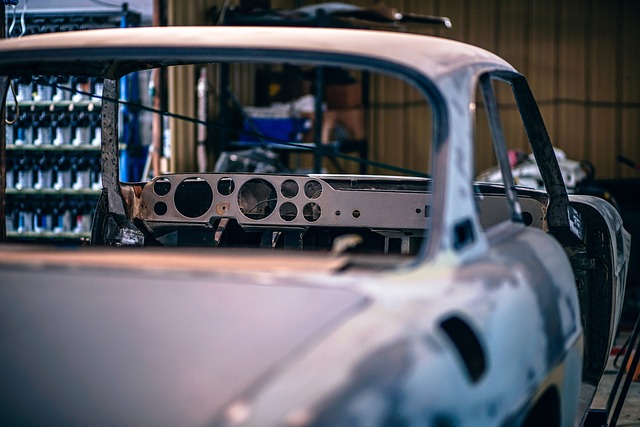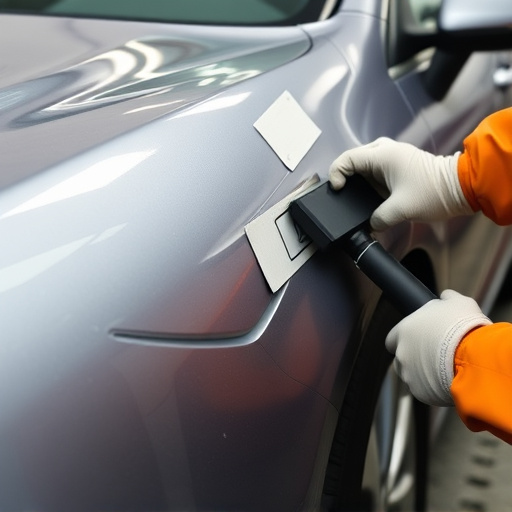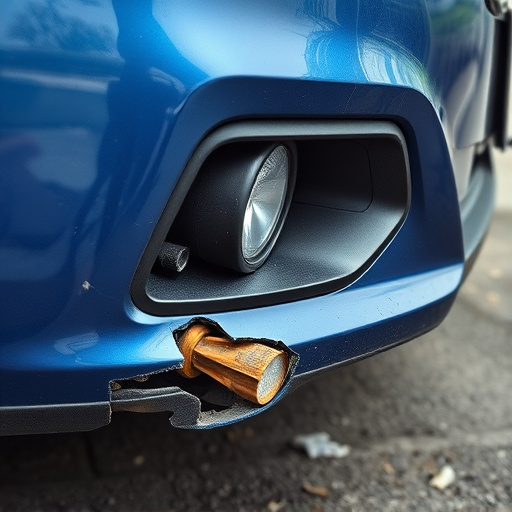Mercedes vehicles with sophisticated sequential turn signals require specialized repair due to complex electronics. The process involves identifying faulty modules, replacing them with compatible parts, and resetting the ECU for seamless integration. Post-repair, rigorous testing including lighting verification, synchronization checks, and diagnostic scans are crucial to ensure vehicle safety and performance. Engage expert auto body shops or collision centers for accurate Mercedes sequential turn signal repairs meeting the brand's high standards.
After repairing or replacing a Mercedes sequential turn signal module, resetting the vehicle’s ECU is a crucial step. This process ensures the system functions optimally post-repair. Understanding the intricate mechanics of the Mercedes sequential turn signal repair involves knowing how the Electronic Control Unit (ECU) controls and sequences lights for safe and efficient turns. This article guides you through the steps to reset the ECU after such repairs, including post-repair testing and important considerations.
- Understanding Mercedes Sequential Turn Signal Repair
- The Process of Resetting the ECU After Repair
- Post-Repair Testing and Considerations
Understanding Mercedes Sequential Turn Signal Repair

Mercedes vehicles are renowned for their sophisticated engineering and advanced features, but even the most cutting-edge systems can experience issues. One such component is the Mercedes sequential turn signal module, responsible for controlling the vehicle’s turn signals in a rhythmic pattern to enhance visibility during lane changes or turns. When this module malfunctions, it requires careful attention and repair, often involving a specialized mechanic with expertise in modern automotive electronics.
The process of repairing a Mercedes sequential turn signal involves several steps. First, the faulty module is identified through diagnostic tools that scan the vehicle’s computer system. Once located, the damaged part is replaced, ensuring compatibility with the vehicle’s electrical system. After the repair, it’s crucial to reset the Electronic Control Unit (ECU), which manages various functions of the car, including the turn signals. This step is vital to ensure the new module integrates seamlessly with the ECU and restores proper signal functionality, enhancing road safety and driving comfort, just like a freshly painted auto body restoration after an accident.
The Process of Resetting the ECU After Repair

After a Mercedes sequential turn signal module repair, resetting the ECU (Engine Control Unit) is a crucial step to ensure optimal performance and reliability. This process involves several careful procedures to recalibrate the system. Following the repair, mechanics typically use specialized tools to access and reset the ECU, clearing any stored error codes and restoring default settings. The ECU is essentially ‘rebooted’ to ensure it functions correctly with the recently replaced turn signal module.
During the reset, a diagnostic scan is often conducted to verify that the system is operating as expected without any anomalies or remaining code issues. This step is vital for maintaining the vehicle’s overall safety and efficiency. A car body shop or auto maintenance facility with expertise in Mercedes repairs will have the necessary tools and knowledge to perform this reset accurately, ensuring your vehicle returns to its optimal state after the turn signal module repair.
Post-Repair Testing and Considerations

After completing a Mercedes sequential turn signal repair, thorough post-repair testing is paramount to ensure optimal vehicle performance and safety. This process involves verifying that all turn signals are functioning correctly, including proper lighting, flickering, and synchronization. A test drive in various driving conditions, including city streets and highways, should be conducted to assess the effectiveness of the repair. Additionally, checking for any error codes or warning lights on the dashboard using specialized diagnostic tools is an essential step.
In light of the importance of reliable turn signals for traffic safety, it’s crucial to consider that a mere visual inspection might not suffice. Many modern vehicles, like Mercedes models, incorporate advanced electronics, and even minor discrepancies in signal operation could indicate underlying issues. Therefore, enlisting the services of a reputable auto body shop or collision repair center with skilled technicians is recommended. They have the necessary tools and expertise to conduct comprehensive testing, ensuring that your vehicle’s turn signals function seamlessly and in line with Mercedes’ high standards after the sequential turn signal repair.
After successfully repairing or replacing your Mercedes’ sequential turn signal module, resetting the ECU (Electronic Control Unit) is a crucial step. This process ensures that the vehicle’s turn signals function correctly and harmoniously with the updated hardware. By following the outlined steps for resetting the ECU, you can ensure optimal performance and reliability in your Mercedes’ turn signal system, ultimately enhancing road safety. Remember, proper testing and considerations post-repair are key to a seamless driving experience.













